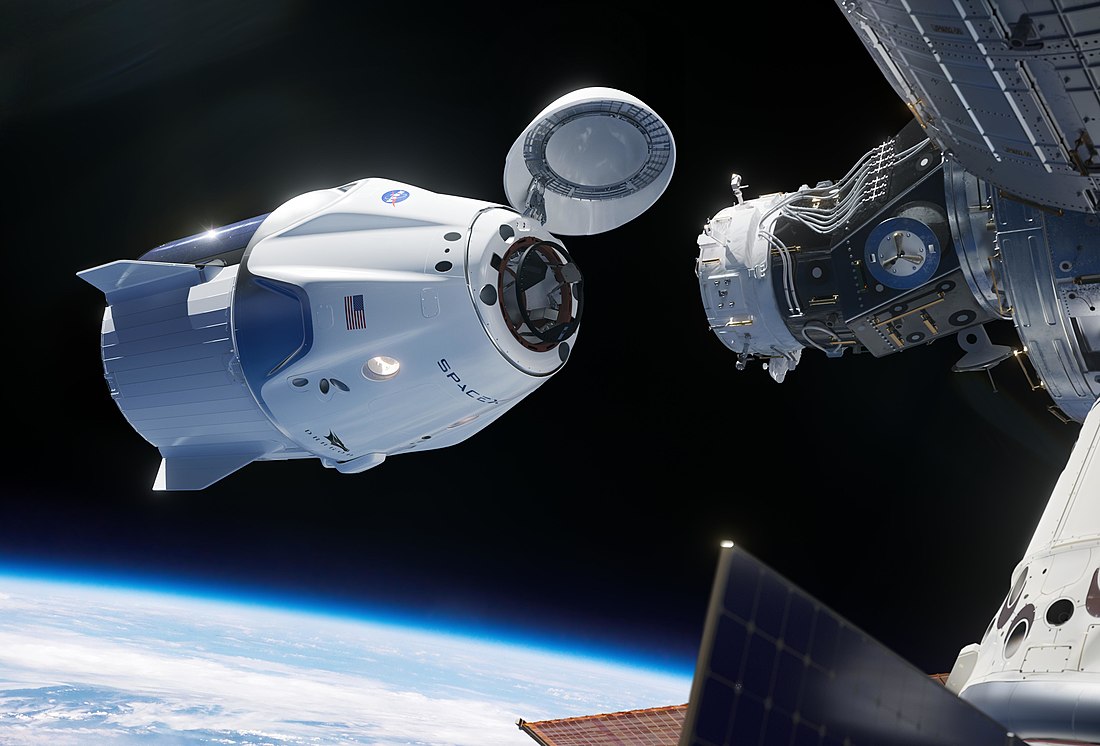SpaceX Crew-11
Planned 2025 American crewed spaceflight to the ISS From Wikipedia, the free encyclopedia
SpaceX Crew-11 is planned to be the eleventh operational NASA Commercial Crew Program flight and the 19th crewed orbital flight of a Crew Dragon spacecraft. The mission will transport four crew members – NASA astronauts Zena Cardman and Michael Fincke, JAXA astronaut Kimiya Yui, and Roscosmos cosmonaut Oleg Platonov — to the International Space Station (ISS). The mission is planned to launch in July 2025.
 Artists' impression of a Crew Dragon approaching the forward port of Harmony on the ISS. | |
| Names | USCV-11 |
|---|---|
| Mission type | ISS crew transport |
| Operator | SpaceX |
| Mission duration | 180 days (planned) |
| Spacecraft properties | |
| Spacecraft | Crew Dragon Endeavour |
| Spacecraft type | Crew Dragon |
| Manufacturer | SpaceX |
| Crew | |
| Crew size | 4 |
| Members | |
| Expedition | Expedition 73/74 |
| Start of mission | |
| Launch date | NET July 2025 (planned)[1] |
| Rocket | Falcon 9 Block 5 |
| Launch site | Kennedy, LC‑39A or Cape Canaveral, SLC‑40 |
| End of mission | |
| Landing date | February 2026 (planned)[2] |
| Landing site | Pacific Ocean (planned) |
| Orbital parameters | |
| Reference system | Geocentric orbit |
| Regime | Low Earth orbit |
| Inclination | 51.66° |
| Docking with ISS | |
| Docking port | Harmony forward or zenith |
| Docking date | July 2025 (planned) |
| Undocking date | February 2026 (planned) |
| Time docked | 180 days (planned) |
 NASA mission patch  Clockwise, from top left: Platonov, Yui, Cardman, and Fincke | |
Crew
| Position[3] | Crew | |
|---|---|---|
| Commander | Expedition 73/74 First spaceflight | |
| Pilot | Expedition 73/74 Fourth spaceflight | |
| Mission Specialist 1 | Expedition 73/74 Second spaceflight | |
| Mission Specialist 2 | Expedition 73/74 First spaceflight | |
Mission
The eleventh SpaceX operational mission in the Commercial Crew Program is scheduled for launch in July 2025.
References
Wikiwand - on
Seamless Wikipedia browsing. On steroids.
